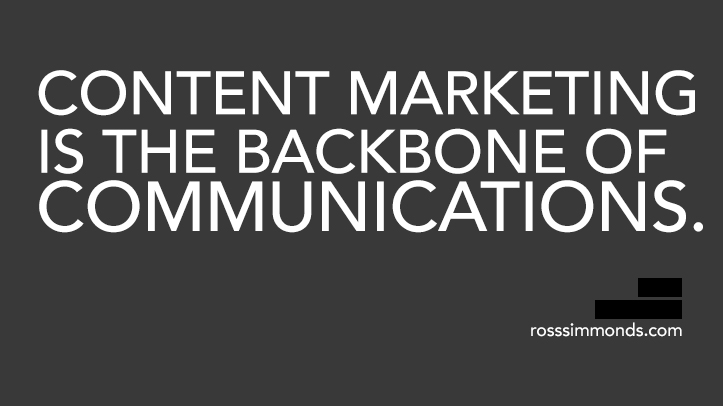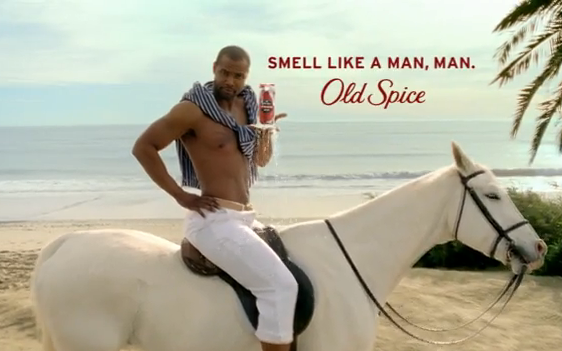Content marketing is a 44 billion dollar industry.
It’s being talked about on blogs, in interviews, infographics and forums around the world. It’s changing the way we do business and it’s changing the way consumers interact with one another. It’s become the fuel that allows media beasts like Facebook, Google, Buzzfeed and Twitter to stay relevant. It’s the fuel that keeps brands in front of their customers and ultimately with open wallets.
I’ve helped brands ranging from Fortune 500 companies to startups use content to drive results that go beyond likes and web traffic. Content marketing isn’t just about driving web visits, it’s about acting as a sales tool and helping you achieve real results for your business. If your content marketer is telling you that it’s impossible to track results through content, I’m here to call BS on that concept. Content can impact the bottom line and has done just that for hundreds of brands over the last few years.
So there you have it. That’s why content is an important part of any marketers toolkit. But in case you don’t think that’s enough to convince your boss that content marketing matters, let me give you a couple more reasons:
Your Customers Want Content
Every month, the 900+ million users on Facebook spend on average about 15 hours and 33 minutes scrolling through their newsfeeds. As they spend time looking at cat photos, their friends wedding pictures and the cute guy from high school; they also come across content created by brands. Status updates that ask questions, photos that offer inspiration and videos that capture their imagination. And they want it. But not all of it.
Too many brands are creating content that isn’t compelling. Content that isn’t aligned with the interests of their audience and offers no value to their newsfeed. If you’re going to craft content for your audience, craft content worth sharing. Craft content that will spark a conversation and is worth seeing.
Content that sparks emotion is the single biggest difference between content that gets shared and content that doesn’t. Every day there are thousands of photos, videos, blog posts and infographics shared across the web. While some people may feel their content is just as good as the next guy, that’s far from the truth. All content is not created equal.
Emotions like anger, happiness and joy were the most frequently associated emotions in relation to content sharing. If people felt happy (Old Spice Guy) after watching a video, they were more likely to share it. If people felt angry after watching a video (Kony 2012), they were more likely to share it. People want content that hits their emotions.
Content Drives Brands Forward
In the late 2000s, brands finally started to become receptive to understanding the impact that the internet was having on their business. Today, we live in world that is shaped by a combination of social networks, compelling apps and engaging media outlets to form the existing online landscape. In all of this, the amount of content being produced is at an all time high. Forcing brands to be creative in developing ideas that can cut through the noise and allow their story to stand out and be worth sharing.
Content has the ability to drive revenue, awareness, engagement and ultimately results. An example of a brand who used content to achieve of these goals is Oreo. If you’re unfamiliar with their content marketing efforts on Twitter and Facebook, it’s a case study worth looking at. The folks at Oreo became famous upon the implementation of reactive storytelling when the quickly responded on social media to the power going out during the 2012/13 Superbowl. The status update went on to be mentioned by media outlets across the globe and stamp the Oreo brand as an innovator and creative genius.
Great Content Drives SEO
There’s no secret that Google has changed the SEO industry forever. Professionals who would once preach about the importance of backlinks, meta data and headlines are no longer able to sing their song about doing enough to reach page one of Google. In todays world, the only way to show up on Google is to create content that is relevant, timely and has high quality. That means sites like Fiverr wont do you any good when attempting to create great content. In fact, sites like this could result in a negative result for your brand and search ranking.
The search power of opportunities like Slideshare, Instagram and the general media have made content marketing even more compelling. Our job as digital marketers is now more strategic than ever before and requires a level of thinking that was once only held by the traditional analysts. The content marketers of today must understand a wide range of channels and be better equipped to understand research and identify powerful insights.
I wish more marketers realized that content marketing strategy doesn’t mean blogging. It’s so much more than that. It’s the combination of gathering consumer intelligence and the development and identification of content channels that can communicate your story effectively. Content marketing has changed the way we do business. It’s changed the way we sell. It’s changed the way we promote. It’s changed the way we consume.
So what are you waiting for? Start identifying how you can take your content marketing efforts to the next level and stand out.
Here are a few other content marketing hacks that could help:


